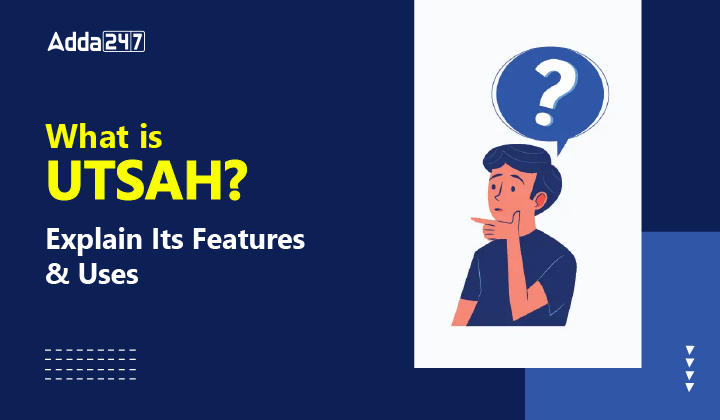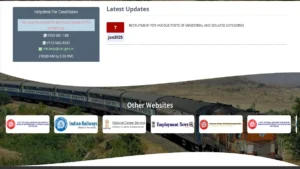Table of Contents
UGC launched two initiatives or portals in May, namely UTSAH and PoP, to revolutionize higher education in India. These portals are brought by UGC to bring the higher education of India to the level with the current needs and bring some much-needed impetus to upgrade the old ways. Today, with this article, we are going to learn everything there is to know about the UTSAH portal; its features, use, and purpose. So, let’s jump right in.
What is the UTSAH portal?
UTSAH stands for Undertaking Transformative Strategies and Actions in Higher Education. The acronym is self-explanatory. The UTSAH portal is meant to provide comprehensive support and effectively track the implementation of the National Education Policy 2020. This is a dedicated platform meant to track the strategic initiatives of NEP 2020 across the country’s Higher Education Institutions (HEIs).
This is to provide quality education in India and track the ground implementation of the radical reforms throughout the Higher Education Institutions. The UTSAH portal will be a comprehensive repository of regulations, guidelines, and frameworks. The motive behind this is to provide a single platform for all stakeholders involved in higher education, particularly universities, and colleges, to bring uniformity. Through this, the educational institutions can showcase their efforts aligning with the NEP 2020 and contribute to the broader national discourse on educational transformation.
What is NEP 2020?
NEP, or National Education Policy 2020, is the first education policy of the 21st Century. Approved by the Union Cabinet of India on 29 July 2020, it is a comprehensive education policy that brings a range of radical changes at all levels of education in India to bring it at par with the worldwide demands of the 21st Century. The NEP 2020 brings holistic and flexible learning experiences to students by minimizing school curriculum content and focusing on 21st-century skills such as analytical and critical thinking. Along with this, it aims to promote experiential learning and creativity. The NEP 2020 is exhaustive and covers numerous things.
NEP 2020 Highlights
In the following, you will find some of the highlights of NEP 2020.
- New 5+3+3+4 school curriculum with 12 years of schooling and 3 years of Anganwadi/pre-schooling.
- No rigid separation between academic streams, extracurricular, and vocational streams in schools.
- Teaching up to at least grade 5 to be in mother tongue/regional languages.
- Vocational education to start from class 6 with Internship.
Features of UTSAH
The list of features of the UTSAH Portal is extensive. Here are a few highlights that you must know about the UTSAH Portal that forms the fundamental three pillars.
- Data Submission: One of the highlights of the UTSAH Portal is its push toward getting colleges & universities to register and submit their data and progress regarding implementing the NEP 2020. This will help UGC to create a comprehensive picture of the effective implementation of the policies, reforms, and initiatives taken to improve Higher Education in India. Also, it will act as a source of inspiration and healthy competition for the rest of the colleges/universities throughout India.
- Central Monitoring: The UTSAH portal will act as a centralized portal for the universities and colleges to access relevant information and updates on various initiatives and notices. The portal covers a wide range of topics, including curriculum development, faculty development, research, and student support.
- User-Friendly Interface: UTSAH simplifies the procedure for submitting initiatives, accomplishments, and best techniques adopted by universities and colleges to drive qualitative reforms. To access the UTSAH portal, available at the utsah.ugc.ac.in, universities and colleges can log in using their AISHE (All India Survey on Higher Education) code.
Main Thrust areas of UTSAH
There are 10 major thrust areas of the UTSAH portal. These can be treated as the intended goal of the Portal, which it aims to achieve. Each thrust area includes a few activities in the form of reforms, programs, guidelines, initiatives, and more to achieve the intended goal/thrust area.
- Multidisciplinary and Holistic Education
- Digital Empowerment and Online Education
- Skill Development and Employability
- Research, Innovation, and Entrepreneurship
- Capacity Building of Teachers for Quality Education
- Governance and Autonomy
- Accreditation and Excellence
- Equitable and Inclusive Education
- Promotion of Indian Languages and Indian Knowledge Systems
- Internationalization of Education
Benefits of UTSAH
A Portal like UTSAH was required to support India’s rapidly growing Higher Education. There are multiple benefits to the Portal. Let’s take a look at them briefly.
- It can effectively track the implementation of NEP 2020.
- After analyzing the trend and shortfalls, it will act as a data collection portal, which will be handy in framing future rules and initiatives.
- It will support the Higher Education Institutions in India as the portal will be a central repository of all the policies, reforms, and initiatives.
- It will create healthy competition among institutions to improve; institutions can showcase their achievements and progress.
- It will create awareness regarding the rules and requirements while bringing uniformity.



 AP DSC 2025 Notification Out, Check Exam...
AP DSC 2025 Notification Out, Check Exam...
 RRB Railway Teacher Exam Date 2025, Exam...
RRB Railway Teacher Exam Date 2025, Exam...
 MP TET Varg 2 Answer Key 2025 Out, Direc...
MP TET Varg 2 Answer Key 2025 Out, Direc...














